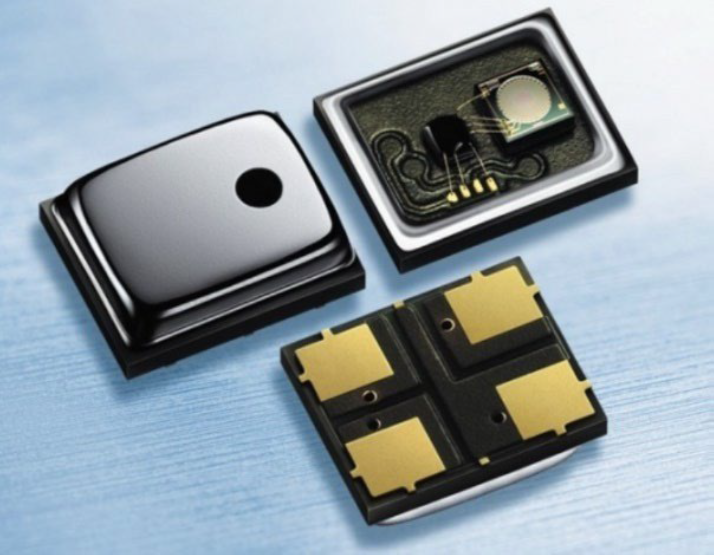UV Activated/ Dual Curing Silicone Adhesives For Automotive Sensors

LiDAR (Light Detection and Ranging) is a surveying technology that measures distance by illuminating a target with a pulse of light. In use for over 60 years in military, aerospace, robotics, and meteorological fields, today it is experiencing a boom of interest due to the expectation that it will be one of the main types of sensors to enable autonomous, or ‘self-driving', cars. Within this realm, ADAS (Advanced Driver-Assistance Systems) utilize silicone around their automotive packages (camera, radar, etc.) in order to seal them from the external environment. Additional deployment to these advanced device package areas also include; potting/encapsulating for MEMS (Micro-Electro-Mechanical Systems), and Optical Bonding.
As autonomous vehicles' “five-stages of evolution” continue, automobile manufacturers have already identified approximately 200 sensor areas around the vehicle that will be instrumental in its realization and achieving their safety goals. One thing they all have in common is the need to protectively seal these key sensor platform areas from heat, cold, moisture and stress−which come from the rigors of the automotive environment.
SHIN-ETSU SILICONES' UV-ACTIVATED DUAL-CURE SILICONE SOLUTION:
In an effort to advance silicones for LiDAR and related automotive sensor applications, Shin-Etsu Silicones of America, Inc. (SESA: A U.S. subsidiary of Shin-Etsu Chemical Co. Ltd., Japan) is introducing their UV-Activated Dual-Cure Silicone Series which includes KER-4410 and KER-4440 as the focal points. Silicones contain compounds that feature a main chain of siloxane bonds which provide distinct advantages over epoxy alternatives including: heat stability, cold resistance, stress releasing, no curing shrinkage and addition/radical polymerization.
Essentially, the adhesive is applied, exposed to UV, the sensors or components are placed on the board, and then other board processes can be conducted in parallel. This dual-cure system saves processing time, requires no need for ovens at high temperatures, doesn't shrink during curing (vs. epoxies), and delivers no added stress.
Curing speed after UV irradiation: The series' UV-activated cure silicone has a time lag from UV irradiation to the start of curing. It is different for each product, so please consider a suitable process. The UV addition type is irradiated with UV light and then cures fully at room temperature or with elevated temperatures.
Low Curing Shrinkage Rate: The series' curing shrinkage rate is less than 0.1%−which is extremely small compared to general organics including acrylic and epoxy UV resin. KER was coated and cured around a copper substrate in a 2mm thickness and showed no signs of warpage.
HARDNESS: A10 / TENSILE STRENGTH: 2.3 / ELONGATION: 350 / COLORLESS & SLIGHTLY CLOUDY
After UV irradiation, it takes 10 to 15 minutes @ 23 °C until the KER-4410 material starts to cure. It is also possible to bond the base material after UV irradiation, therefore it is suitable for bonding non-transparent members such as metal to overcome shadow cure areas. Heat treatment also reduces curing time.
Featuring a long open time (15-20 minutes), the specific open time depends on the UV integrated light intensity. Recommended open time is: 3,000mJ/cm2 →Within 15 min…12,000mJ/cm2 →Within 5min.
KER-4440:
HARDNESS A43 / TENSILE STRENGTH 6.1 / ELONGATION 430 / CREAMY WHITE & TRANSLUCENT
The KER-4440 gels in a short time (within a few minutes) after UV irradiation, so it is recommended to perform UV irradiation after placing the substrate.
By changing the UV irradiation conditions, it is also possible to slightly adjust the curing start time. When laminating after UV irradiation, it should be performed before the gelation starts. After UV irradiation, KER-4440 fully cures even at 23 °C x 1 day−however, the adhesive strength will be further improved by heat treatment at 80 ℃ x 1hr.
CONCLUSION:
According to SESA's Automotive Segment Manager, Chad Kobylanski, “Shin-Etsu's depth of experience and knowledge as a silicone material leader in the automotive sensor market has provided a spring board for us to launch the KER- 4410/4440 series across a myriad of key LiDAR and ADAS market segments. We strive to be at the forefront of this by evolving essential products in this line, and developing solutions for these unique and demanding applications.”

The leading global integrated photonics conference and exhibition will once again bring together key players from across the value chain for two-days of strategic technical sessions, dynamic talks and unrivalled networking opportunities.
Join us face-to-face on 28th – 29th June 2022
- View the agenda.
- 3 for the price of 1. Register your place and gain complementary access to TWO FURTHER industry leading conferences: CS International and PIC International.
- Email info@sensorsinternational.net or call +44 (0)24 7671 8970 for more details.
*90% of exhibition space has gone - book your booth before it’s too late!



























